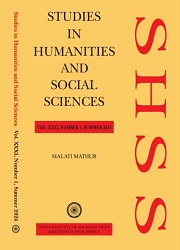Urban Expansion and Housing Quality in Mega Cities of India
A Case Study of NCT-Delhi
Keywords:
Households, Urbanization, HousingAbstract
Presently, more than half of the humanity lives in urban areas. Urban expansion has been seen as a growing problem, which involves range of social and environmental costs. Tremendous population growth and rapid urbanization has created a serious problems related to housing particularly in cities of developing countries. In mega cities, there is an immense need to improve housing quality, as it not only increases physical and social attractiveness of the area, but
also improves property value, which is good for house owners. Good housing quality provides a better place to live safe and healthy. Wellplanned and properly built house with availability of civic amenities also contributes to sustainable environment of the area. Rapid urban expansion with poor implementation of effective policies for better housing facilities has resulted in many problems in mega cities of India. NCT-Delhi, the capital has also experienced the rapid urban expansion. Delhi has experienced highest population growth rate among the mega cities of India. To understand the urban expansion, the census data has been collected and then spatio-temporal patterns are analyzed at the sub district level for the period of 2001-2011. Further, using remote sensing geospatial data, the urban expansion is explained during the years 2001, 2011 and 2021. To understand the patterns of housing quality in Delhi, seven indicators has been
identified and finalized. These reflect the housing livable condition, overcrowding, ownership, and availability of selected civic amenities.


